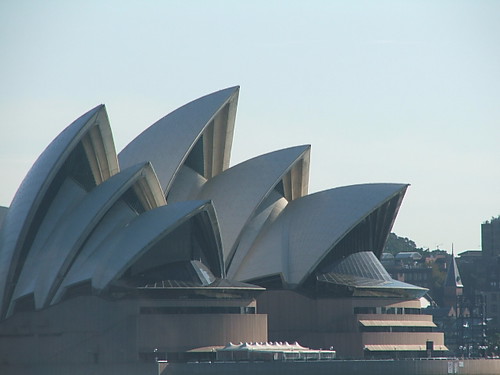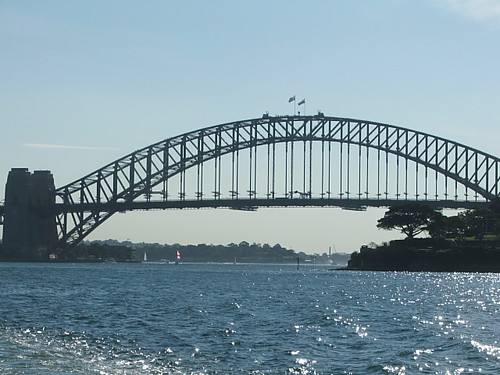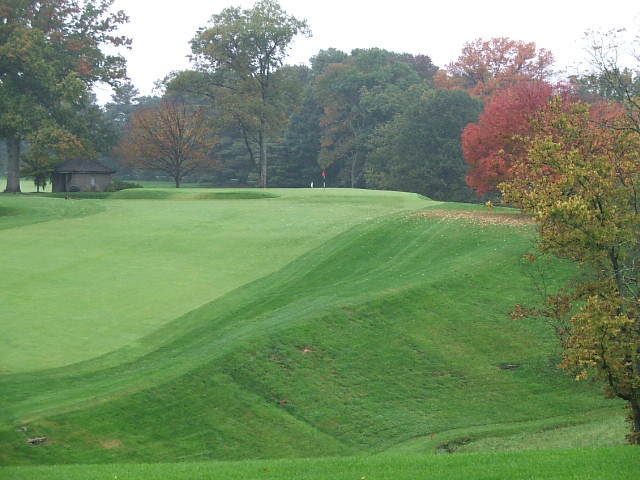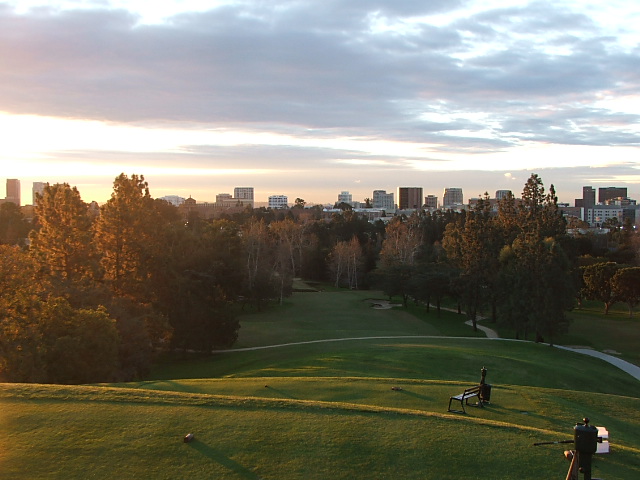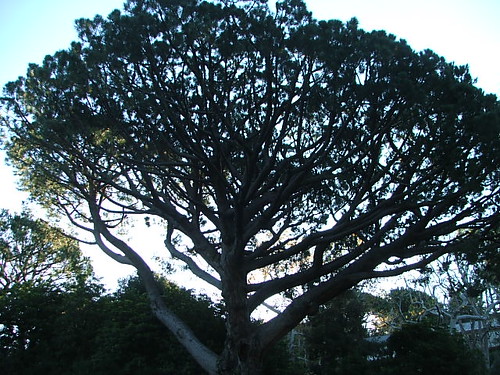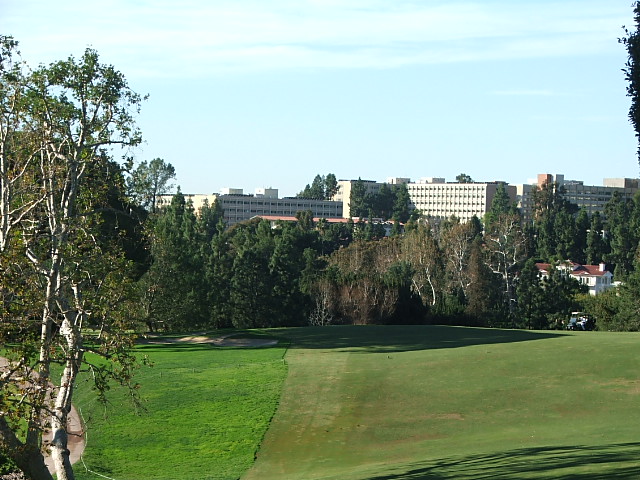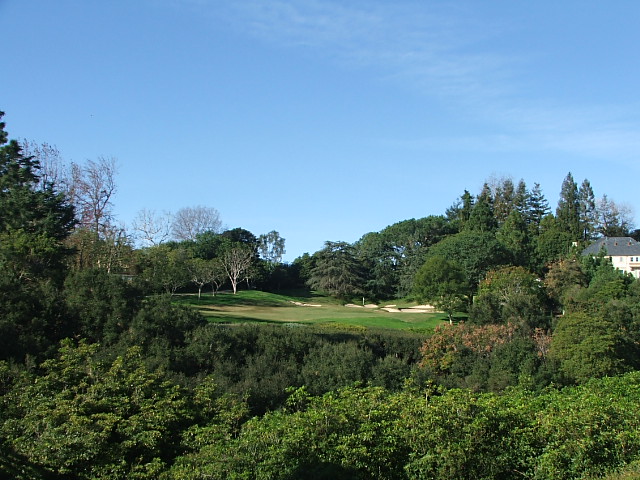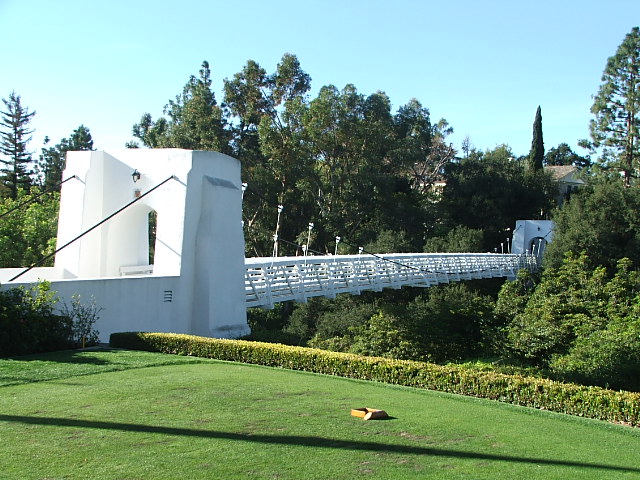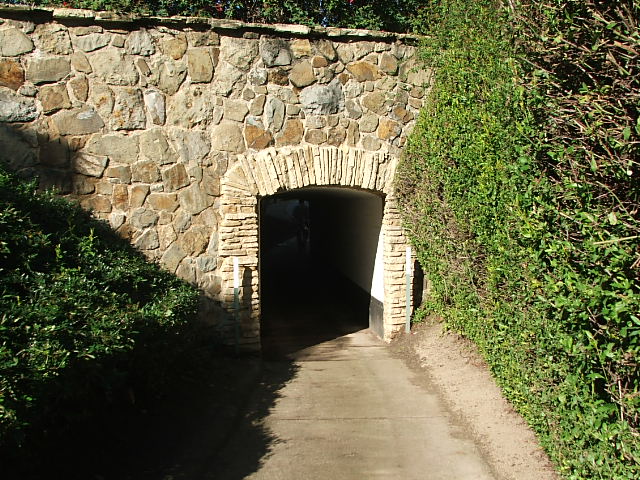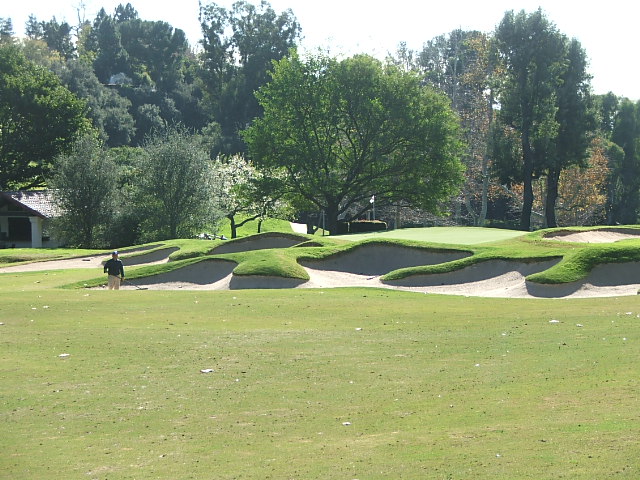Congratulations to Pete Blaisdell from New Hampshire who answered all but one question correctly (Royal Adelaide), but received extra credit on two questions. He wins a copy of The Life and Work of Dr. Alister Mackenzie, who had his hand in the design of more courses in the top 100 than any other architect.
1. What course was Winston Churchill a member of?
Walton Heath (#82), Churchill was a member from 1910-1965. Notice how upright Churchill's stance is. He also uttered one of the greatest lines about the game, "...a game whose aim is to hit a very small ball into an even smaller hole with weapons singularly ill-designed for the purpose."

2. What course is also its own self contained township?
Pine Valley (#1). Pine Valley is incorporated as a township in New Jersey and has its own self contained miniature town hall and police force.

3. What course has held Olympic events on its property?
Riviera (#36) played host to equestrian events as the 1932 Los Angeles Summer Olympics.

4. On what course will you find wicker baskets?
The flag pins at Merion (#13) are made of red wicker. Half credit if you answered Sea Island (Seaside) as it also has wicker baskets, however, it is not ranked in the world top 100.

5. What is the closest you will get to the Playboy Mansion while playing the top 100?
Off the 13th green at Los Angeles Country Club, North Course (#59), although don't expect to see much cleavage during your round as there is a big hedge between the course and the mansion.

6. What course do you have to drive through Sherwood Forest to get to?

Woodhall Spa (#36) in Linconshire England. When you drive east from Manchester to Woodhall Spa you drive through Sherwood Forest in Nottinghamshire.
7. What course do you travel past a nuclear submarine base to get to?
Fishers Island (#29), New York. To access Fishers Island you take a boat or ferry from New London, CT, down the Thames River where General Dynamics has a naval ship yard for nuclear submarines.
8. At what course will you enjoy the lobster lunch?
The National Golf Links of America (#20) in Southampton, New York is famous for its lobster lunch which includes shepard's pie, fish cakes, macaroni and cheese and steak and kidney pie. Below is a picture of the dining room where the lobster lunch is served.

9. What course will not let women anywhere on the property?
Garden City (#55). Although Augusta National, Pine Valley and The Golf Club allow no women members, women are allowed on the property.
10. What is the most copied hole in the world? Where did it originate? For extra credit, how many of them are there in the top 100?
The Redan hole, which is the 15th hole at North Berwick. A redan hole is a par three that has a large bunker in front of the green and a deep bunker beyond the short side of the green. The green generally slopes from front-right to back-left. It is a hole that is approached diagonally. There are at least 16 Redan holes in the top 100 courses including Los Angeles's #11 which is a reverse-redan hole: Bethpage Black #3, Cabo del Sol #6, Camargo #15, Chicago #7, Country Club #12, Fishers Island #2, Los Angeles #11, Merion #3, Muirfield Village?, National #4, Ocean Course at Kiawah #8, Pacific Dunes #17, Shinnecock #7, Shoreacres #14, Somerset Hills #2, Southern Hills #8, Yeamans Hall #6.
11. What course features a cemetery as a hazard on the first hole?
Ballybunion (#13), County Kerry, Ireland
12. What course has no pro shop?
The Honourable Company of Edinburgh Golfers, Muirfield (#3) in Scotland because they have no golfing professional. I also didn't see a pro shop at Morfontaine on my memorable visit there, so extra credit was given.
13. What course features a Squirrel as its symbol?
The Country Club at Brookline (#33), although if you guessed Medinah, we'll give you half credit given their problem with squirrels burying nuts in the greens. Oakmont also features a squirrel.

14. What course served as a training ground for spies during the Second World War?
Congressional (#96), outside Washington D.C. The OSS, the forerunner of the C.I.A. used it as a training ground.

15. What course's 13th hole is named 'Loch Lomond'?
The 13th hole, a par 3, at Hirono (#35) in Kobe Japan, built in 1932. Loch Lomond, located in Scotland was built in 1994, and while the holes do have names, none are named Loch Lomond. The sixth hole is named Long Loch Lomond.

16. What is the northern-most located course on the top 100 and the southern-most?
Royal Dornoch (#16) in Scotland, which is located 4 degrees south of the Arctic circle and Paraparaumu Beach (#99) in New Zealand which is located 2,000 miles above Antarctica. For those going off the current Top 100 list, the answer would have been Cape Kidnappers in New Zealand.
17. Which course has cops guarding several holes?
Royal Liverpool #72 (Hoylake). 'Cops' are earth walls that mark internal out of bounds, as seen on the first hole, below.

18. What course did Dwight Eisenhower suffer a heart attack on while he was President?
Cherry Hills (#90). Ike used to spend extended periods of time in Denver where he would locate his 'summer White House' and played Cherry Hills often, as he was a member.
19. What course features a full-size hangman's noose on its 16th hole?
The Golf Club, New Albany, Ohio (#48)

20. What course do you begin the day by hitting a (basically) blind shot over a hedge row?
Cypress Point (#2) has a large hedge you hit your tee shot over on the first hole. The hedge is there to protect cars riding through the 17-mile drive, which bissects the hole.
21. What course has a train running through the middle of it? Extra credit for a list of courses with trains running along side the course.
Royal Adelaide, Australia (#50). The grey line running through the map below indicates an active train line. Courses with trains running along side: Carnoustie (near 18), Prestwick (along the 1st hole), Pine Valley (near 13 and 14), Royal Troon, Hoylake and Royal Lytham & St. Annes.

22. Which course formerly had a race course running through the land?
Somerset Hills (#69), in New Jersey. Prior to the golf course being built the land was used as an estate and included a private race course for horses. Royal Liverpool (#72) was also built on the site of a former track - the Liverpool Hunt Club.

23. What architect designed the most courses in the top 100?
24. Where are Miss Grainger's bosoms located?
On the 15th hole at The Old Course at St. Andrews (#6). The 15th hole, named Cartgate (In) features Miss Grainger's bosoms which are two prominent humps on the right side of the fairway. Your drive off the tee should be placed at the church steeple between the two prominent humps: Miss Grainger's bosoms.
25. Where is the 'End Hole' bunker?
On the 9th hole of the Old Course at St. Andrews. The End Hole bunker is a very small, penal bunker located 39 yards from the green.







